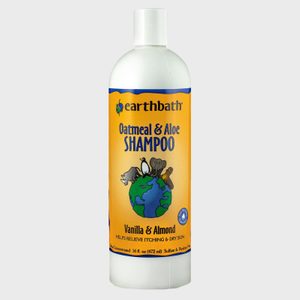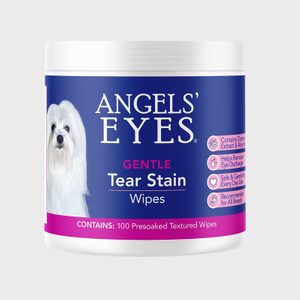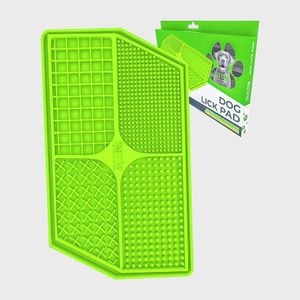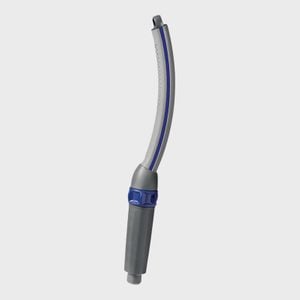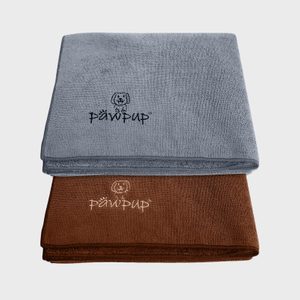How to Bathe a Dog
Updated: Apr. 02, 2024

Some dogs seem to attract dirt or seek out stinky items to roll on. Our pet editor explains the right way to bathe a dog with these easy tips.
At my house, my dog Shadow-Pup sits beside us on the couch each evening and shares my side of the bed at night. Even if your dogs aren’t allowed to share your pillow or sit on the furniture, you’ll still want to make sure they’re clean for your home’s sake. That’s why it’s important to know how to bathe a dog to keep her looking and smelling fresh.
While Professional groomers offer special services like clipping your poodle show dog into a gorgeous moving topiary, and some breeds have very specific coat care needs, most dogs can easily be bathed right at home. And for pet parents allergic to their dogs, as well as dogs allergic to grass and dust, it’s especially important to know how to bathe a dog, because it improves everybody’s health.
Also, check our easy guide to keeping your dog’s teeth clean and breath fresh for a happier, healthier pup!
How often should dogs be bathed?
Bathing too often strips natural healthy oils from the fur and skin. Some house dogs probably get baths too often (here’s how often you should really wash your dog), but using the proper products helps protect them. After all, we love them—just not their wet dog smell. Schedule your dog baths based on these guidelines.
- Puppies get grungy when they play outside or eat messy food, but refrain from bathing them until they’re at least four weeks old.
- Dogs also need baths when they get sick, but bathing often stresses out sick and elderly canines. Neither youngsters nor the old guys can regulate body temperature efficiently.
- For healthy adult dogs, the timing of baths depends on the type of fur and how dingy they get. Even when they stay clean, curly-coated canines like poodles need a trim about every two months, and should get a bath at the same time. Dogs with silky hair, like Yorkshire terriers or Airedales with wiry coats, get by with about four baths a year.
- Dogs with double coats (a wooly undercoat with a thick, longer outer coat) include collies and German shepherds. They’ll only need a bath about twice a year. These double-coated breeds shed heavily in the spring and fall and leave drifts of fur everywhere that you must clean up. Plan a sudsy bath after they’ve finished shedding.
- If your dog has short, close-lying fur like Dobermans, Rottweilers, and Labradors, once a year is enough.
- Dogs that spend lots of time outside, especially hunting dogs and water-loving Labs, will need more baths when they get smelly or muddy—or if they try to make friends with a skunk, in which case this skunk odor remover is particularly helpful.
What’s the best way to bathe a dog?
The best way to bathe your dog depends on the size of the pet, her willingness to be bathed, your athleticism (or lack thereof), and the time of the year.
- Tub: Best for large dogs.
- Shower: Also better for big dogs, especially those with longer fur. A shower attachment helps get the fur thoroughly soaked and rinsed.
- Sink: Ideal for smaller dogs. That faucet comes in handy! Plus, when washing the dog at waist height, you won’t have to bend over.
- Hose: The garden hose works well for any size dog in warm weather. Big dogs can stand on the grass or patio; little ones can perch on a table.
- Outdoor kiddy pool: Similar to the tub, but with more room to bathe. Water-loving breeds like Labs and golden retrievers enjoy this. Kids can get in the tub with King to help during warm months.
- Dunking technique: Perfect for the smallest dogs that hate getting sprayed. A series of water-filled buckets or other containers can be used to soak, clean, and rinse the pooch.
- Dry shampoo: For short fur, wipe-on or spray dry shampo is a great interim option between baths.
How to bathe a dog
Tools and Supplies
- Comb: Especially for dogs with longer fur, you’ll need grooming supplies to comb out any tangles. Hitting a tangled mat with water cements it into place, so at that point, you’ll have to cut it out.
- Clippers: For poodle-type dogs, you’ll want to learn how to groom your dog in the style you prefer before bathing. For matted fur you can’t pick out with a comb, use electric clippers (or even a mustache trimmer) to break up and remove the mat.
- Dog shampoo: Choose a dog-specific shampoo for your pet. Dishwashing soap and even baby shampoo strips away natural oils and can cause skin inflammation. Dog shampoos are specifically formulated for dog skin. You can find shampoos that help brighten light-colored pets and oatmeal-based products that soothe itchy skin, to name a few.
- Conditioner: All dogs benefit from a coat conditioner after the shampoo is rinsed out. Some stay in the coat and others simply rinse through the fur. Dog coat conditioners especially help curly-coated dogs that might otherwise frizz after drying.
- Tether: You may need a grooming tether to help keep your dog in the tub, shower, or close to the outdoor spigot. Tethers designed for dog baths clip on one end to the collar or harness and the on other to a stationary anchor, like the water faucet.
- Handheld sprayer: A sprayer helps soak and rinse your dog all over, including under her tummy. The sprayer from the sink or shower works fine, but if you don’t have one, invest in a shower attachment that you can attach to the faucet or hose.
- Cotton balls: Water inside your dog’s ears can lead to inflammation or ear infections. Place cotton balls inside both ears during the bath to protect them.
- Baby oil: Protect your dog’s eyes from shampoo with a drop of baby oil in each eye, or an eye-specific ointment from your vet. For dogs with tear stains, you can use gentle tear stain removers.
- Dog pool: A kiddy wading pool works great for warm-weather dog baths.
- Lick pad: Dogs who love water may still object to being sudsed up and bathed. Giving them a pleasant distraction lets you do your job and persuades them that bath time means great things for them. A lick pad or lick mat stuck against the countertop or wall and spread with a yummy treat helps your dog focus on the reward while you lather and rinse him.
- Spreadable treat: Peanut butter, aerosol cheese, or another lickable dog treat spread on the lick pad gives your dog something to look forward to.
- Rubber mat: Dogs hate baths when they have to stand on a slick surface. Place a rubber bath mat inside the tub, sink, or kiddy pool to relieve your dog’s stress. Alternatively, you can use a towel for more secure footing.
- Towels and a washcloth: The best part of the bath for dogs is toweling off. They get rubbed all over—basically a petting all-over massage. You can use your regular towels, or invest in one of these high-capacity dog bath towels to quickly dry him off. You’ll also need a washcloth to wash and rinse your dog’s face.
- Blow dryer: You can invest in a professional dog groomer blow dryer if your dog requires lots of bathing and fur care. But a hand-held blow dryer can work equally well as long as you keep it on low heat so you don’t burn your pet.
Directions
- Gather supplies: Collect everything you need in the location where you plan to bathe your dog. Our pets often mind-read (or seem to) and disappear when they know you plan to bathe them. Don’t torture her by making her watch your preparations.
- Prepare the location: Whether you’ll bathe your dog in the sink, tub, shower, or kiddy pool, make sure you have everything needed on hand. Place the bath mat down for solid footing, connect the tether to the wall, and load the treat dispenser with goodies. You’ll want Princess to focus on that first thing, to give you time to hook him up to the tether. But don’t bring her in just yet—you still have a few other things to prepare. Once you’re done bathing your dog, here’s how to wash your bath mats so they’re fresh, fluffy and free of bacteria.
- Fill containers: Run lukewarm water until it’s just deep enough that water reaches your dog’s knees. While some dogs won’t mind icy water, others like it hot—but over-warm bathwater can accidentally and easily overheat your dog.
- Test sprayer: Many dogs fear the water sprayer. So when you use it, hold the sprayer close to her body so she doesn’t see the spray. Some dogs, like my German shepherd Magic, think it’s great fun to bite the spray of water from the hose. You don’t want a game of hose-tag in the house or worse, broken teeth, when Princess bites the nozzle.
- Wear old clothes: It’s a dog rule that if they get wet, so will you. Wear clothes you won’t mind getting sudsy. If bathing outside in warm weather, wear a swimsuit and invite the kids to help.
- Prepare the pup: Comb her thoroughly before bathing to remove any mats or tangles. Pay special attention to behind the ears, under the armpits, in the crease of her thighs, and under the tail. Also, carefully place a drop of baby oil in each eye and insert cotton balls in both ears. Place the dog into the tub, shower, kiddy pool, or sink, and show her the treat dispenser. Connect the tether to her collar or harness. Encourage her to lick the treat, reassuring her along the way.
- Soak dog thoroughly: By now, your dog should be stand in the water. The running water scares many dogs, so we recommend using a cup or a small plastic pitcher to wet your dog. Pour the water starting at her neck and work your way down her back. Use the sprayer right against her body to wet her undersides. Avoid wetting her face at all. Dogs will shake off the water once their face gets wet, so save that for last, and use a washcloth to clean his face.
- Add shampoo: Fill the pitcher with water and a bit of shampoo. Diluting the shampoo helps it work through thick fur more easily. Start again at the neck and lather the fur up well.
- Rinse: Dip and pour the bathwater over top of your dog to rinse off the suds. Start at the tail end, saving the neck for last. Use the sprayer close to her body to wash away suds on her belly.
- Shampoo again: Repeat the process if necessary. Suds should appear faster the second time, so you won’t need as much shampoo.
- Rinse: Once again, rinse your dog until the fur feels squeaky clean. When you’re absolutely sure you have all the soap rinsed off, rinse her thoroughly with the hand-held sprayer. Pay special attention to her armpits, tummy area, and beneath her tail. Soap that doesn’t rinse away not only looks dingy, but it can also cause skin irritation and itching.
- Condition: Apply the conditioner according to the product directions. Some rinse off while others stay in the fur.
- Dry: Once she’s rinsed and conditioned, allow your dog to shake off. Remove the cotton in her ears. Wrap little dogs in the towel and turn it into a cuddle session, keeping them warm. For bigger dogs, take care as she gets out of the tub or shower that she doesn’t slip and fall. Most dogs won’t need the blow dryer and some may fear it. But if your dog lets you use it, set the heat on low and hold it far away from the fur.

